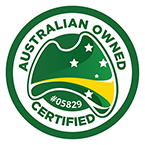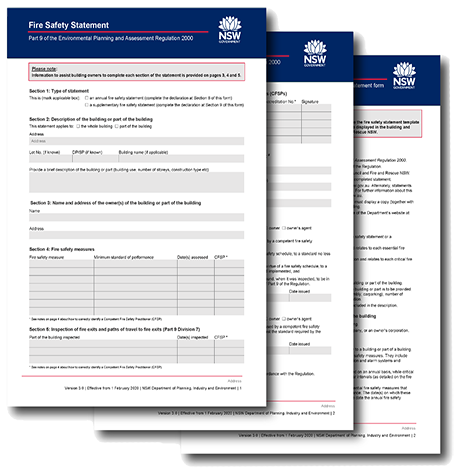Although emergency exit lights do not actively fight fire, they are as important as the fire suppressing equipment in a building. They help occupants navigate the nearest path to the exit in the event of any emergency, not just fire outbreaks.
One of the responsibilities of building managers or business owners is to ensure that their employees or building occupants are safe and protected from fire. This includes providing the building occupiers a safe and efficient path of egress.
If you’re a business owner or building manager, here is a guideline of things you need to make sure your establishment is compliant and safe.
The installation requirements and guidelines for emergency and exit lighting can be found in the Building Code of Australia. There are different obligations under the Regulations depending on when the building was built or whether it was built after July 1, 1994.
Generally, all Class 6 buildings with over 100 square meters of floor area built after July 1, 1984, require exit and emergency lighting. All Class 6 buildings require at least one exit sign. But, what are class 6 buildings? This building class includes shops, cafes, restaurants, milk bars, dining rooms, and bars. These fall under Fire Safety Certification for Annual Fire Safety Statements & Final Fire Safety Certificates.
AS 2293.1 specifies requirements for the design and installation of emergency lighting and illuminated building exit signage. This is also known as AS2293 emergency lighting standards. Buildings must comply with this standard to ensure the safety of the occupants and avoid fines and penalties.
An emergency lighting must be installed in the following areas:
- in every fire-isolated stairway, fire-isolated ramp, or fire-isolated passageway; and
- in every storey of a Class 5, 6, 7, 8 or 9 building where the storey has a floor area more than 300 m2
- in every passageway, corridor, hallway, or the like, that is part of the path of travel to an exit; and
- in any room having a floor area more than 100 m2 that does not open to a corridor or space that has emergency lighting or to a road or open space; and
i. in any room having a floor area more than 300 m2; and
- in every passageway, corridor, hallway, or the like, having a length of more than 6 m from the entrance doorway of any sole-occupancy unit in a Class 2 or 3 building or Class 4 part of a building to the nearest doorway opening directly to
- a fire-isolated stairway, fire-isolated ramp or fire-isolated passageway; or
- an external stairway serving instead of a fire-isolated stairway under D1.8; or
ii. an external balcony leading to a fire-isolated stairway, fire-isolated ramp or fire-isolated passageway; or
- a road or open space; and
- in every required non fire-isolated stairway; and
- in a sole-occupancy unit in a Class 5, 6 or 9 building if
- the floor area of the unit is more than 300 m2; and
- an exit from the unit does not open to a road or open space or to an external stairway, passageway, balcony or ramp, leading directly to a road or open space; and
- in every room or space to which there is public access in every storey in a Class 6 or 9b building if?
- the floor area in that storey is more than 300 m2; or
- any point on the floor of that storey is more than 20 m from the nearest doorway leading directly to a stairway, ramp, passageway, road or open space; or
iii. egress from that storey involves a vertical rise within the building of more than 1.5 m, or any vertical rise if the storey concerned does not admit sufficient light; or
- the storey provides a path of travel from any other storey required by (i), (ii) or (iii) to have emergency lighting; and
- in a Class 9a health-care building
- in every passageway, corridor, hallway, or the like, serving a treatment area or a ward area; and
- in every room having a floor area of more than 120 m2 in a patient care area; and
- in every Class 9c aged care building excluding within sole-occupancy units; and
- in every required fire control centre.
In addition, the BCA also states the following requirements for Exit signs;
Exit lighting for occupants must be clearly visible to persons approaching the exit, and must be installed on, above or adjacent to each of the following:
- door providing direct egress from a storey to
- an enclosed stairway, passageway or ramp serving as a required exit; and
- an external stairway, passageway or ramp serving as a required exit; and
- an external access balcony leading to a required exit; and
- door from an enclosed stairway, passageway or ramp at every level of discharge to a road or open space; and
- horizontal exit; and d. door serving as, or forming part of, a required exit in a storey required to be provided with emergency lighting in accordance with E4.2.
At FCF, we ensure that your emergency & exit lighting adheres to codes and standards. We work in accordance to the AS 2293.2 which dictates the following testing procedures and intervals:
- All emergency exit lights testing must be conducted every 6 months
- Inspection & cleaning of fittings and reflective surfaces must occur every 12 months
- 6 monthly inspections include lamp tests and replacements as well as a 90-minute discharge test
To guarantee that your business, organisation, and your employees are protected in the event of an emergency, contact us about our safety testing services today.
Our team is composed of fire safety and compliance experts who are dedicated and passionate about their jobs. Contact us for any inquiries about these emergency exit light requirements and other fire safety requirements.



 Passive fire protection refers to the measures taken to prevent the spread of fire and smoke within a building, ensuring the safety of occupants and minimising damage. This type of fire protection involves the use of fire-resistant materials and products, such as fire doors, fireproof walls, and fireproofing sprays, to create fire-resistant barriers within a building.
Passive fire protection refers to the measures taken to prevent the spread of fire and smoke within a building, ensuring the safety of occupants and minimising damage. This type of fire protection involves the use of fire-resistant materials and products, such as fire doors, fireproof walls, and fireproofing sprays, to create fire-resistant barriers within a building.
